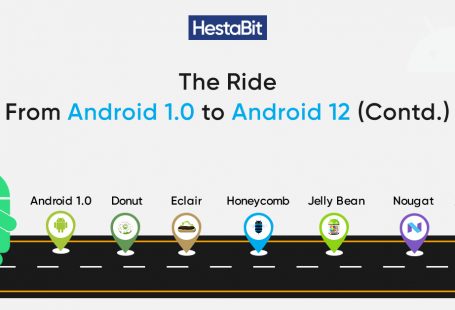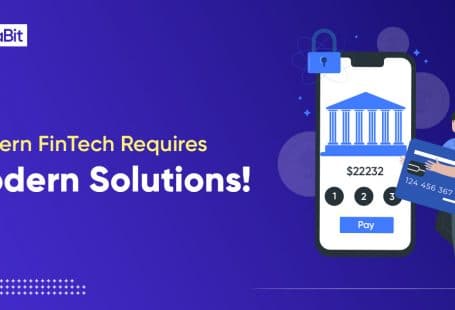When you will turn your head and look back, you will realise what a fantastic journey it has been! Android has metamorphosed both visually and functionally from its first commercial release in 2007 to improved updates till today. Although, like other technologies, Google’s mobile OS started scrappily. However, with time, it evolved as a dominator in the field of mobile operating systems, winning the hearts of more than 2.8 billion users worldwide.
Today, in this article, we will talk about this globally renowned platform’s journey from birth to the present. This informational piece will bring you a fast-paced tour to relive the entire trip of transforming Android versions. The possibility is you might end up taking services from an Android application development company after reading the entire blog.
The Early Days: Android Beta, Android Version 1.0 and 1.1
The ride started in 2003 when the development of Android was started by Android Inc., which Google later purchased in 2005. Google launched the beta version of Android on November 5, 2017, with the assistance of Open Handset Alliance (OHA). However, the development of its SDK took around seven days, and Google released it on November 12, 2007. Many public beta versions of the software development kit were released through software emulation as there were no specific physical devices available to test the OS.
Then comes the first batsman from team Android, all set to play its very first innings. Android made its first commercial release in 2008 with the launch of Android 1.0. During that time, Google did not enter the smartphone world as a mobile phone manufacturer. Instead, it marketed its mobile OS to other smartphone companies. HTC became the first to integrate Google’s platform into their T-Mobile G1 (aka HTC Dream) handset. And that’s how Android started its journey in the world of smart devices. You can read about the history and evolution of Android in our previous blog.

The release of Android 1.0 was so ancient that it did not have any codename back then. According to some people, names like “Astro Boy” and “Bender” were associated internally with the pre-builds of Android 1.0. However, these were never accepted as official codenames of early Android versions.
The features were pretty basic, and the developers developed Android far less than the OS we know today. Nevertheless, Google still managed to add a suite of essential Google applications, such as Gmail, Google Maps, Calendar, YouTube and an HTML browser (which wasn’t called Chrome yet).
Some other features included in Android 1.0 and 1.1 similar to the current version of the OS is the pull-down notification window. Even these earlier versions know how to deal with push notifications and manage them for users’ convenience.
Another trailblazing invention in Android comes in the form of the Google Play Store, which was known as the ‘Market’ back then. It was (and still is) the central place where all the Android applications are available for download.
Apart from the Play Store (or Market), another innovation included in Android 1.0 and 1.1 was utilising home screen widgets. It is one of those features that were not available in iOS and wasn’t even incorporated until the introduction of iOS 14 in 2020.
The Later Versions of Android OS
Before we start discussing them, let’s look at the picture below to get an idea about all the versions of Android that have come into existence to date.
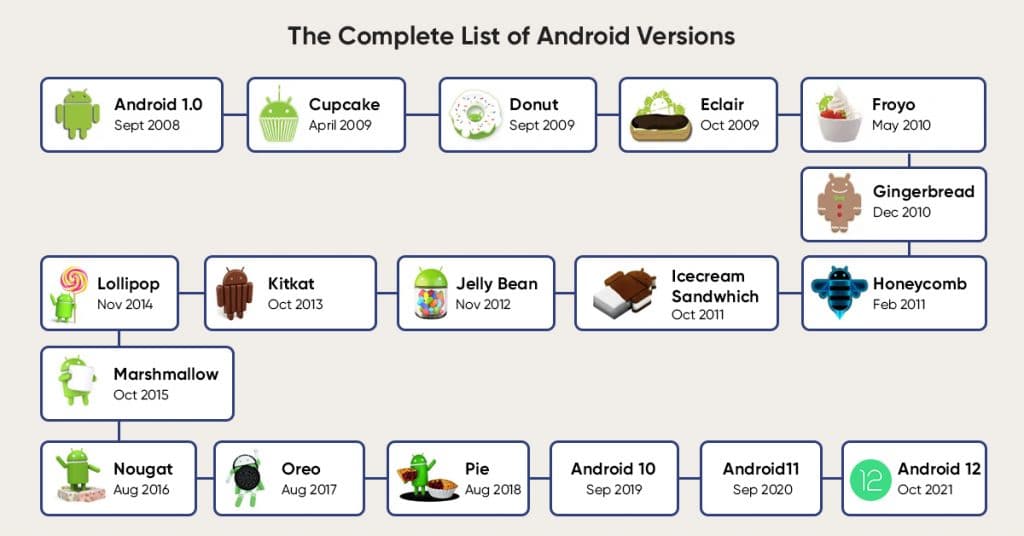
We will talk about each one of them in detail. So, let’s get started with Android Cupcake.
Android 1.5 (Cupcake)
Released in April 2009, Android 1.5 was the first Android version having a codename. It was also the first version of Android containing an on-screen keyboard. This version added a few newer features compared to Android 1.0 and 1.1. Some of the key elements to note are an automatically rotatable screen, third-party keyboard support, and the ability to upload videos to YouTube.
Some of the handsets launched with Android Cupcake installed include Samsung Galaxy S series phones and HTC Hero.
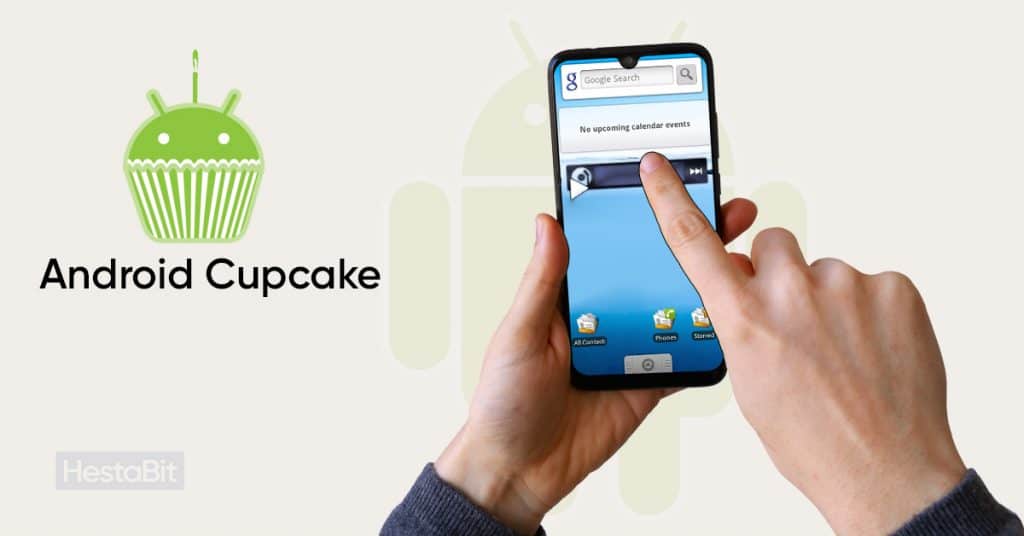
Features of Android 1.5
- Based on Linux Kernel version 2.6.27
- Video recording and playback in major video formats, such as MPEG-4 and 3GP.
- Bluetooth auto-pairing and stereo support.
- Copy and paste options in the web browser.
- Specific date/time stamp shown for all the call log entries and events.
- Animated screen transitions and inclusion of new stock boot animation.
- Automatic screen rotation.
- Users can upload videos to YouTube and photos to Picasa.
- Ability to check device usage history
- Support for Home Widgets and on-screen keyboards.
Android 1.6 (Donut)
After the release of Cupcake and observing its success, Google did not wait for too long to launch its next update in September 2009. The new update Android 1.6 (or Donut) offered support for CDMA-based network carriers. Other top features include quick toggling between camera, camcorder and pictures gallery for a streamlined user experience. Donut also came up with a power control widget for managing the primary connectivity option, like Bluetooth, Wi-Fi, GPS, etc.
Some of the famous brands launched a very few devices with Android 1.6, one of them was Dell Streak, having a screen size of 5″, which was considered to be huge at that time.
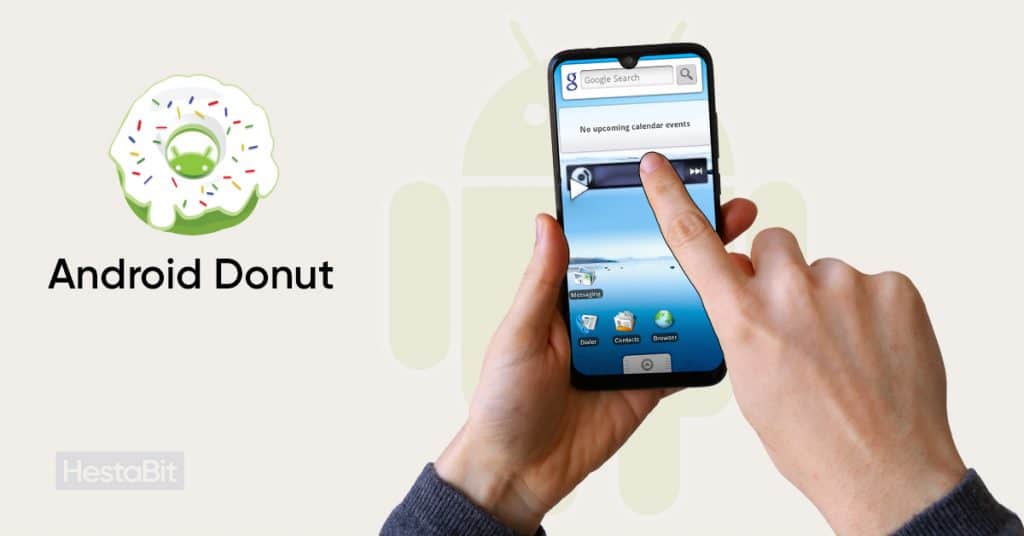
Features of Android 1.6
- Based on Linux Kernel version 2.6.29
- Quick Search Box: Voice and text entry search for contacts, local files and the web.
- Easier searching: Users can view app screenshots in Android Market (Play Store).
- Gallery, Camera and camcorder integrated with more features and easy toggling.
- Users can select multiple photos for deletion.
- Support for CDMA/EVDO, 802.1x, VPNs, and integration of a text-to-speech engine.
- Support for WVGA screen resolutions that allow the OS to run on devices with different screen sizes.
- Speed enhancement in searching and camera apps.
- Introduction of a new GestureBuilder development tool and expanded Gesture framework for the developers
- Multilingual speech synthesis engine that allows all the Android applications to “speak” a string of text.
Android 2.0-2.1 (Eclair)
The Android 2.0 version was released in October 2009, about a year after the launch of Android 1.0. Google took over a month to launch the next version in the list as “Eclair”. It supported the features of text-to-speech, live wallpapers, multiple accounts login, and many more. This version also came up with the Google Maps navigation option that is still one of the groundbreaking innovations to ease the travelling for the users.
The first mobile company Motorola launched the first handset (Motorola Droid) integrated with Android 2.0 Eclair.
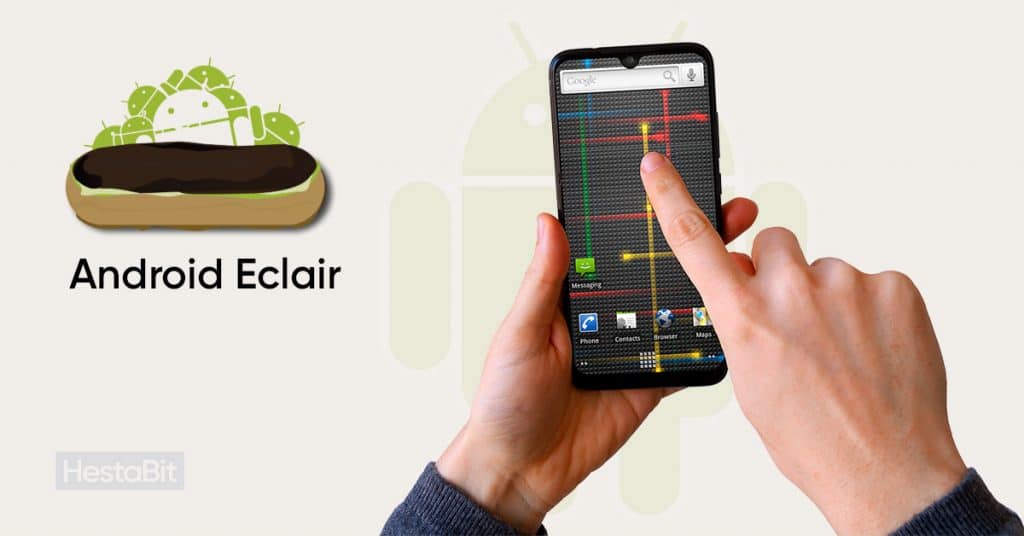
Features of Android 2.0
- Based on Linux Kernel 2.6.29.
- Expanded Account synchronisation: Enabling users to add and access multiple accounts in a device.
- Microsoft Exchange email support: A combined inbox to read an email from multiple accounts on one page
- Bluetooth 2.1 support.
- Tap a Contacts photo and select it to call, SMS, or email the dedicated person.
- Ability to search all kinds of messages (SMS and MMS), oldest messages get automatically deleted when a defined limit is reached.
- Included new camera features, such as flash support, digital zoom, macro focus, scene/landscape mode, white balance, colour effect, etc
- Enhanced typing speed and a more intelligent dictionary: The system learns and memorises word usage and suggests contact names.
- Added HTML5 support to the web browser along with updated UI and double-tap zoom feature
- Boosted hardware speed and renovated UI.
- Improved Google Maps 3.1.2.
- MotionEvent class enhanced to track multi-touch events.
- Pressure-sensitive touch support in API, even though no corresponding hardware existed at that time.
- Inclusion of live wallpapers.
Two more updates came in the next three months (2.0.1 and 2.1), which looked forward to bug fixes and minor improvements in the API.
Android 2.2 (Froyo)
The next version in the list is Android 2.2 or Froyo, which is the short form for ‘Frozen Yogurt’. Google officially launched it in May 2010 with the mind-blowing features of Mobile hotspot connectivity and PIN lock for more security.
The first mobile phone that came with the Android 2.2 update is Nexus One, which aimed to refine the user experience and interaction.
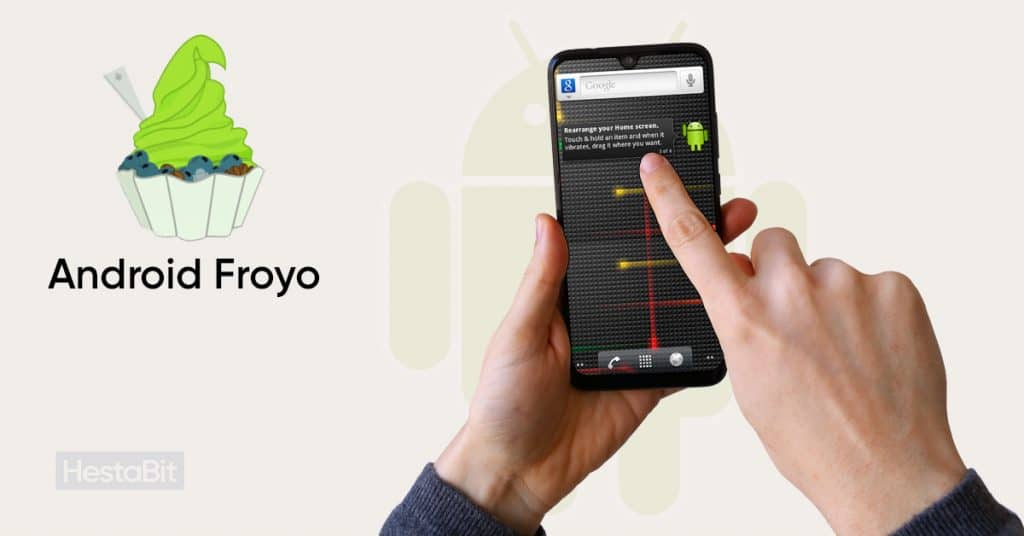
Features of Android 2.2
- Based on Linux Kernel 2.6.32
- Optimisation in speed, memory, and performance
- Additional improvement in the application speed by implementing JIT compilation
- Incorporation of Chrome’s V8 JavaScript engine into the web Browser
- Android’s Cloud to Device Messaging (C2DM) service support
- Allowing push notifications
- Improvisation in Microsoft Exchange support: Integration and adoption of security policies, GAL (Google Automotive Link) look-up, remote wipe and calendar syncing.
- Inclusion of an advanced app launcher with shortcuts to Phone (Dial) and Browser applications
- Integrated USB tethering and Wi-Fi hotspot functionalities
- Settings for disabling data access over a mobile network
- Updated Market (or Play Store) application with batch and automatic app update features.
- Feature of quick toggling between multiple keyboard languages.
- Supports Bluetooth-enabled cars
- Options for adding numeric and alphanumeric passwords (Pattern and PIN)
- Designated fields for uploading files in the Browser application.
- The browser showed all animated GIFs frames instead of just the first one only.
- Support for installing applications to expandable memory.
- Adobe Flash support.
- High-PPI displays (up to 320 PPI) for four-inch 720p screens.
The later updates (2.2.1, 2.2.2, and 2.2.3) mainly dealt with bug fixes, security updates, performance enhancements and fixing SMS routing issues for Nexus One.
Android 2.3 (Gingerbread)
The actual visual identity of Android came into the limelight after the release of Android 2.3 (Gingerbread) in December 2010. It appeared as a redesign of Android’s stock widgets and home screen UI. Gingerbread supported smartphones with NFC (Near Field Communications). Along with that, it also came up with an enhanced keyboard and multi-touch support. Last but not least, it brought a surprise for selfie lovers – yes, it supported front-facing cameras. Users also have an option to video chat with the help of Google Talk.
The first device that supported both Android 2.3 and NFC was Nexus S – a mobile phone developed by the collaborative effort of Google and Samsung.
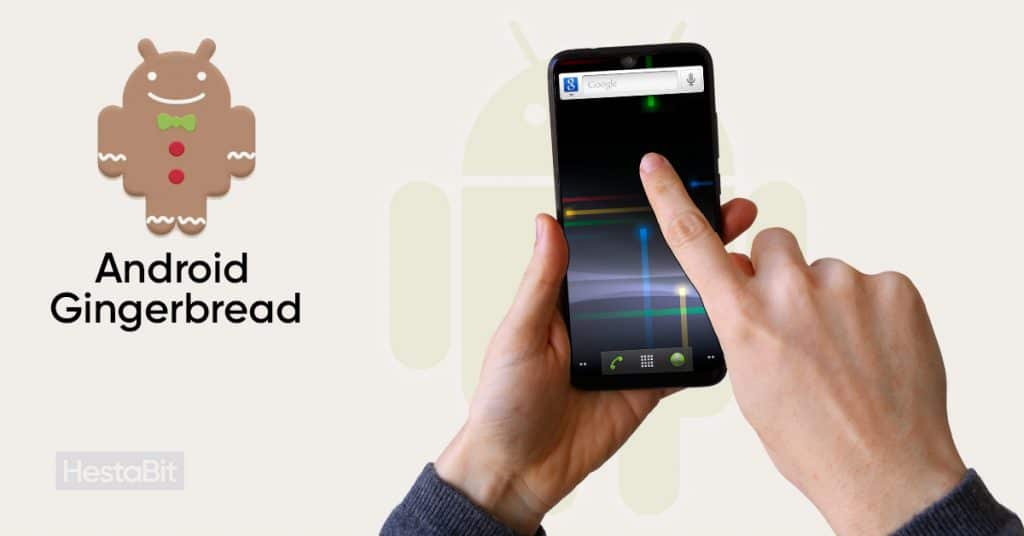
Features of Android 2.3
- Based on Linux Kernel 2.6.35
- Updated UI design with escalated simplicity and speed
- Support for magnified screen resolutions (WXGA and higher).
- Native support for SIP (Session Initiation Protocol) and VoIP (Voice over Internet Protocol) internet telephones
- Faster performance of a virtual keyboard, with more accuracy, improved suggested text and voice input method.
- Enhanced copy/paste functionality: users can select a word by press-holding and then copy and paste it.
- Extended support for NFC: users can easily read an NFC tag fixed in a poster, sticker, or ad.
- Incorporated audio effects such as reverberation, equalisation, bass boost, etc
- An upgraded Download Manager helps users easily access any file downloaded from the email, browser or any other mobile app.
- The device can have multiple cameras, including a front-facing camera, if available.
- Extended support for AAC audio encoding and WebM/VP8 video playback.
- Better power management by managing applications that kept the device awake for too long
- Improvisation in native code development.
- New updates and enhancements related to audio and graphics for game developers
- Increased performance by concurrent garbage collection
- Native support for more sensors (such as gyroscopes and barometers)
Around seven more updates of Gingerbread were released by Google for one year, which mainly focused on API improvement, bug fixes and performance enhancement. The later updates also included improvement in camera functionalities, battery optimisation, modifications in applications, such as Gmail, Google Talk, etc.
Android 3.0-3.2 (Honeycomb)
HoneyComb was the odd one out in the history of Android versions as its primary focus was tablets and other large-screen smartphones. It was first released in February 2011, focusing on targeting Android devices (specifical tablets) with large screen resolutions and sizes. The eye-catching features include redesigned UI in which physical buttons are replaced by virtual buttons available on the screen.
The first device launched with Android Honeycomb is the Motorola Xoom tablet. Other than that, the early tablets from Samsung (Galaxy series) also used Android Honeycomb as their operating system.
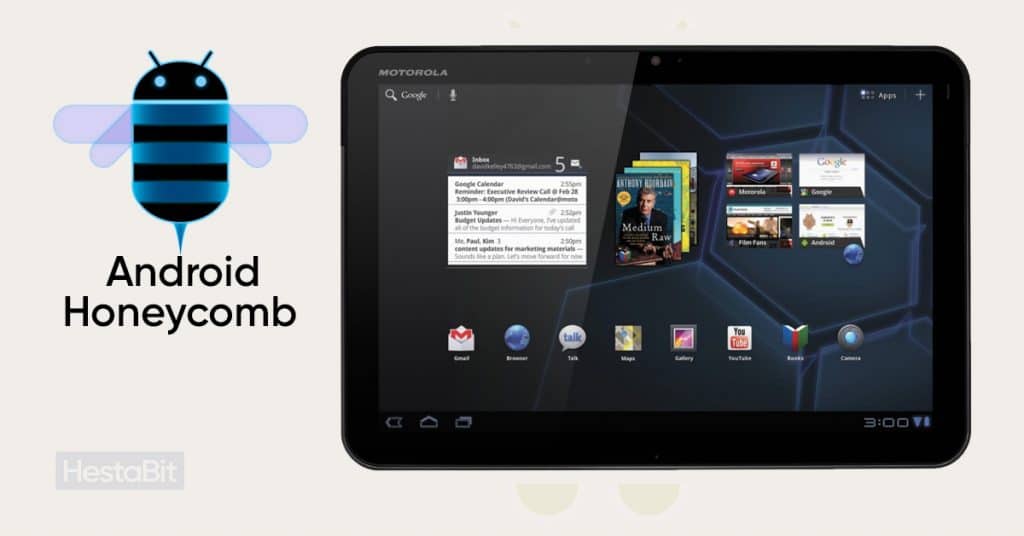
Features of Android 3.0
- Based on Linux Kernel 2.6.36.
- New “holographic” user interface for tablets.
- Quick access to notifications, added system bar, and soft navigation buttons, available at the bottom.
- Accessible contextual options, navigation, added action bar, widgets, and other types of content at the top
- Multitasking features: tapping Recent Applications in the System Bar allows users to see snapshots of the tasks underway and quickly jump from one application to another.
- Redesigned keyboard, fast typing, efficient and adjustable screen sizes
- Simplified, more intuitive copy/paste interface.
- Advanced and modified Camera features, such as exposure, focus, flash, zoom, time-lapse, front-facing Camera, and many more
- Full-screen mode in Gallery; quick access to thumbnails for all photos.
- New dual-sided Contacts user interface.
- Inclusion of advanced two-layered Email UI to view and organise messages more efficiently. Users can select one or more messages.
- Multiple browser tabs replaced browser windows and a new “incognito” mode is allowed anonymous browsing.
- Hardware acceleration.
- Multi-core processors support.
- Encryption of all user data.
- HTTPS stack improved with Server Name Indication (SNI); Filesystem in Userspace (FUSE; kernel module).
- Restricts apps from accessing secondary storage (memory cards) outside of pre-defined, application-specific directories.
- Full access to primary storage based on a separate application-level permission
The later significant updates (Android 3.1 and 3.2) focused on UI refinement, enhancement in connectivity (Wi-Fin, USB-on-the-go, etc.), and improvements in application software, such as Google Books, Adobe Flash, etc.
Android’s Journey To be Continued
For now, we will ask you to wait till we continue describing the other versions and their features in the following article. You can read about them in our next blog. Till then, hang in there and we will be back with another interesting and informational piece for you! 🙂


